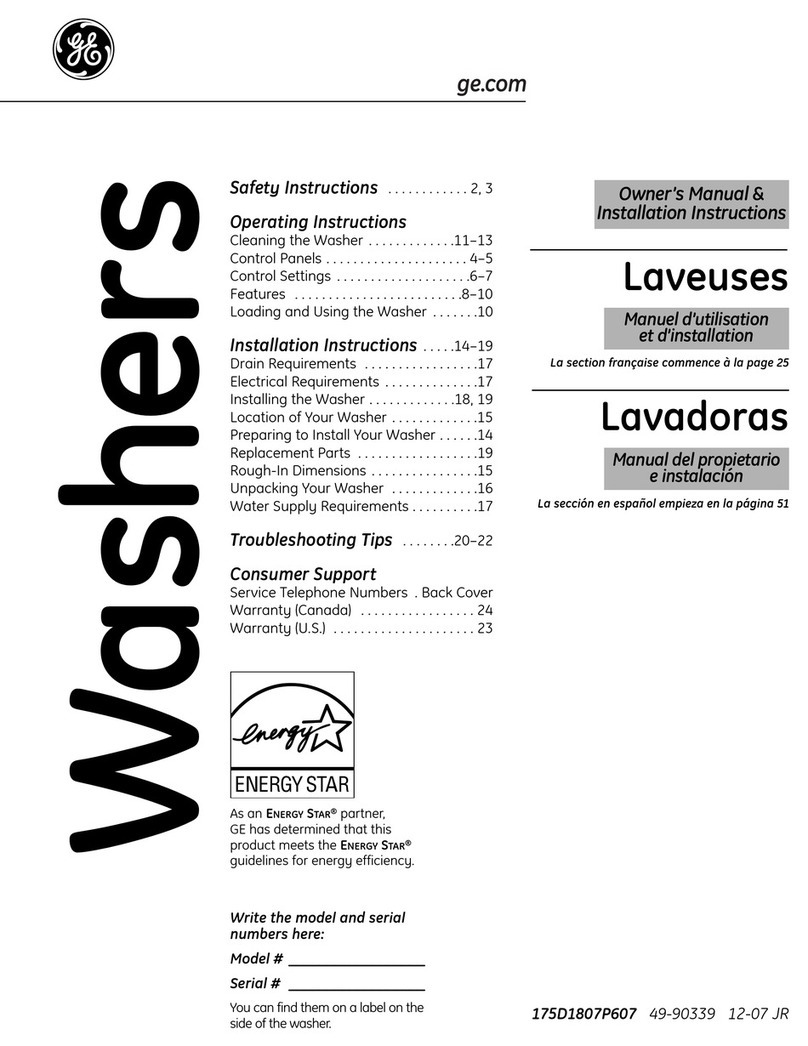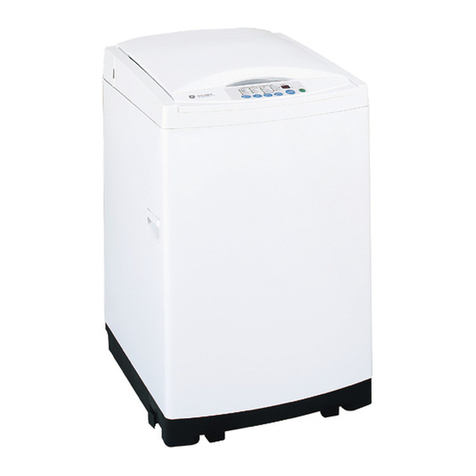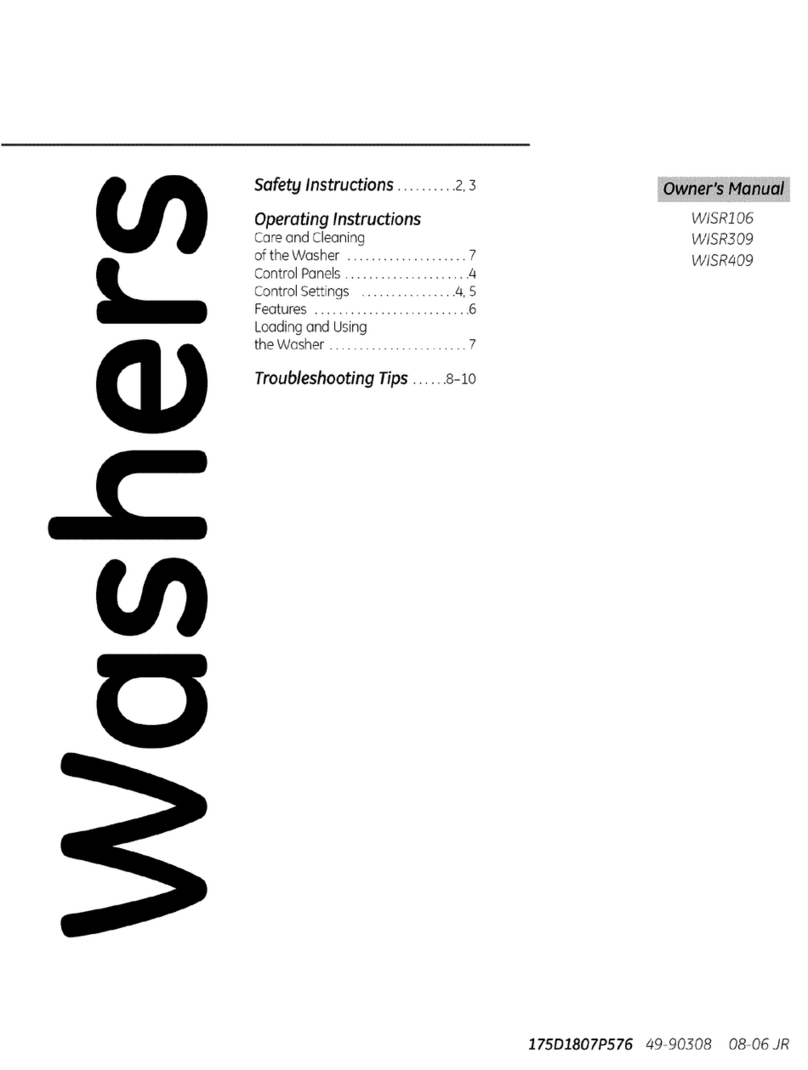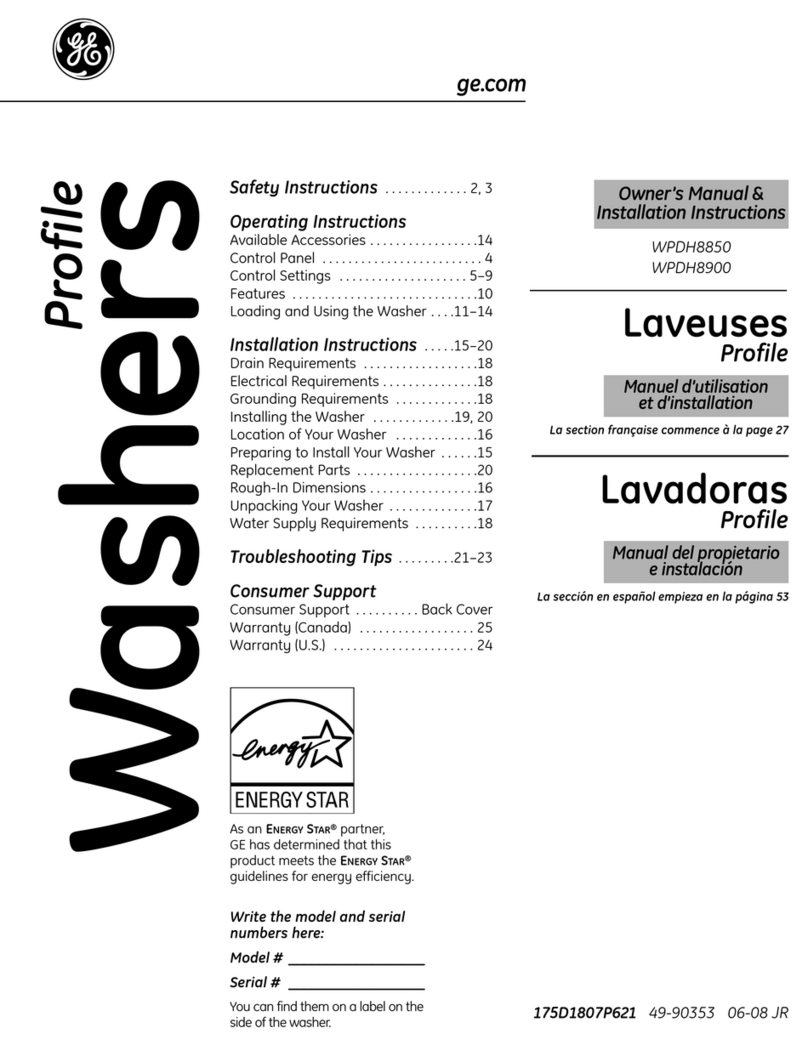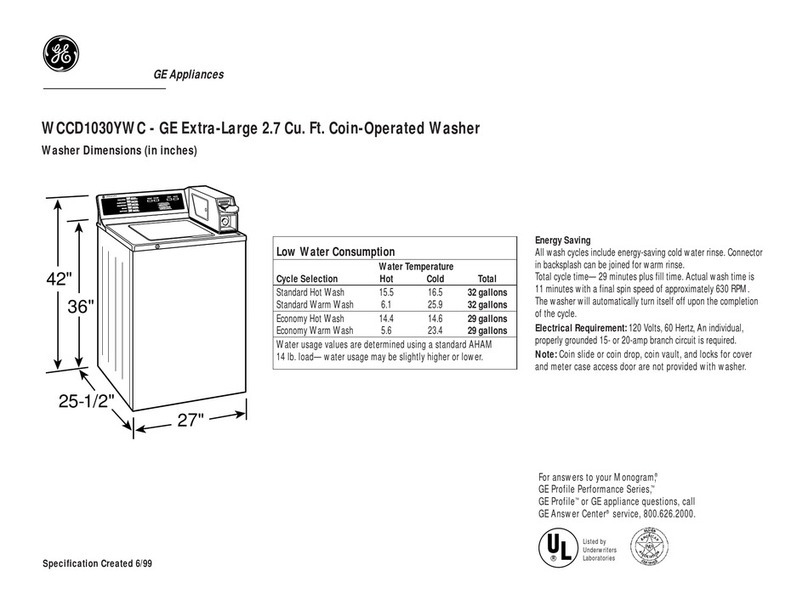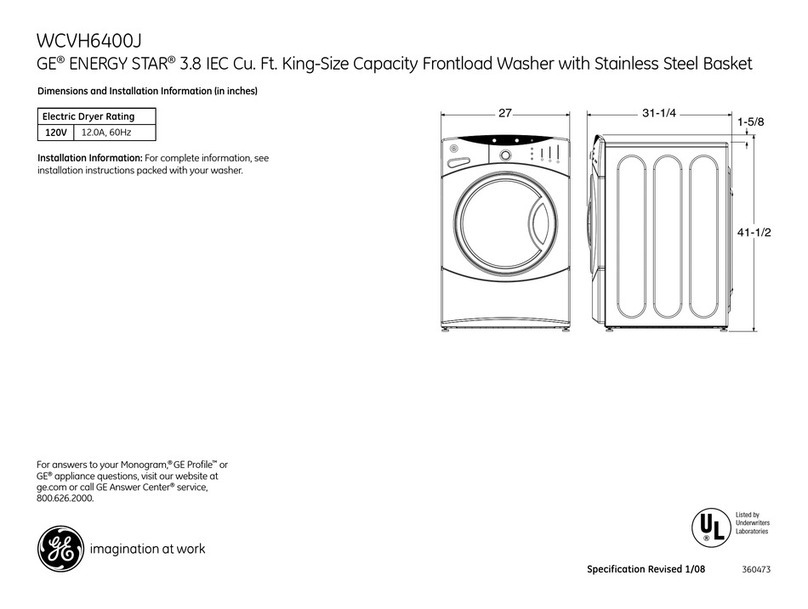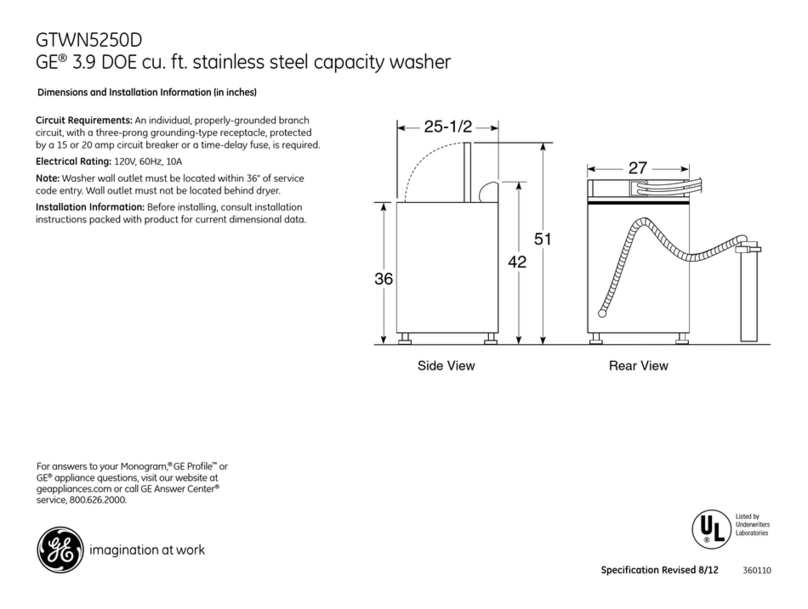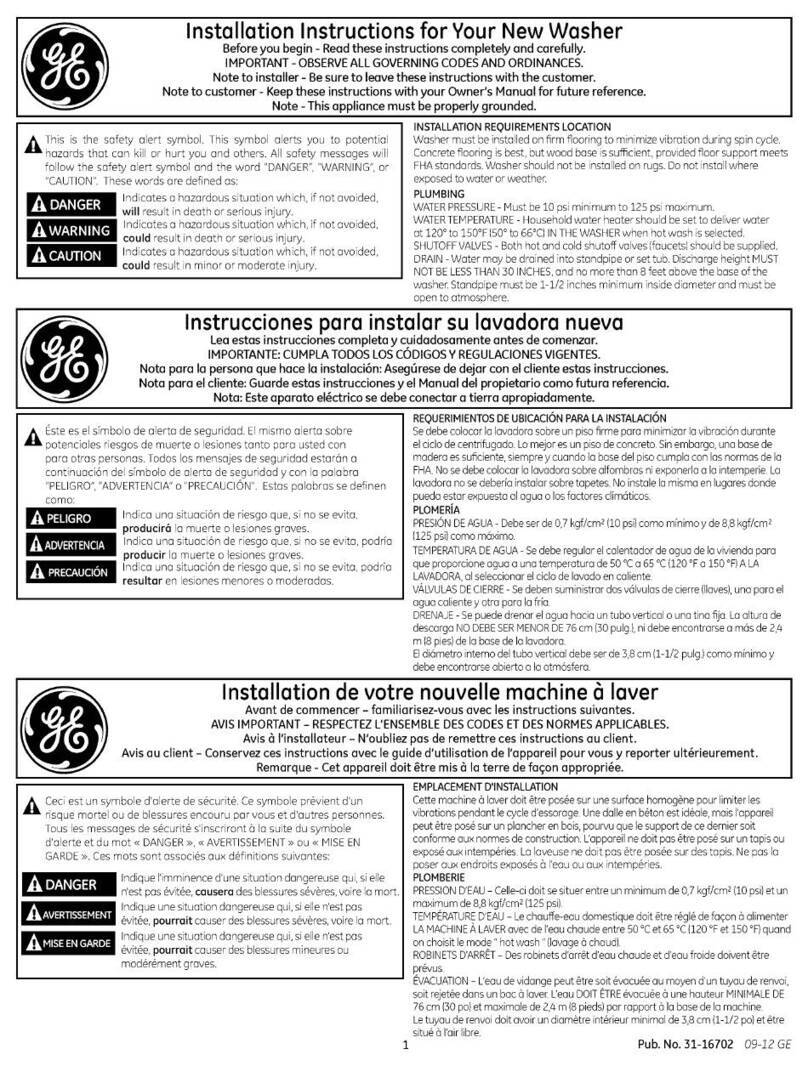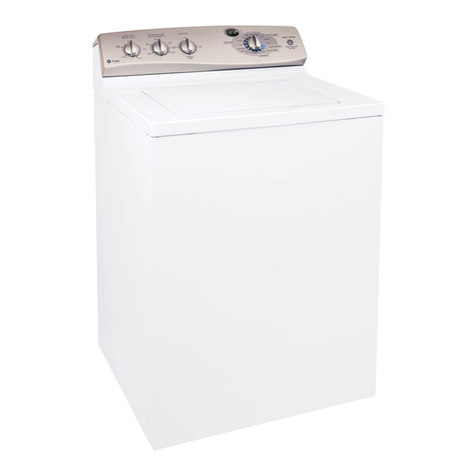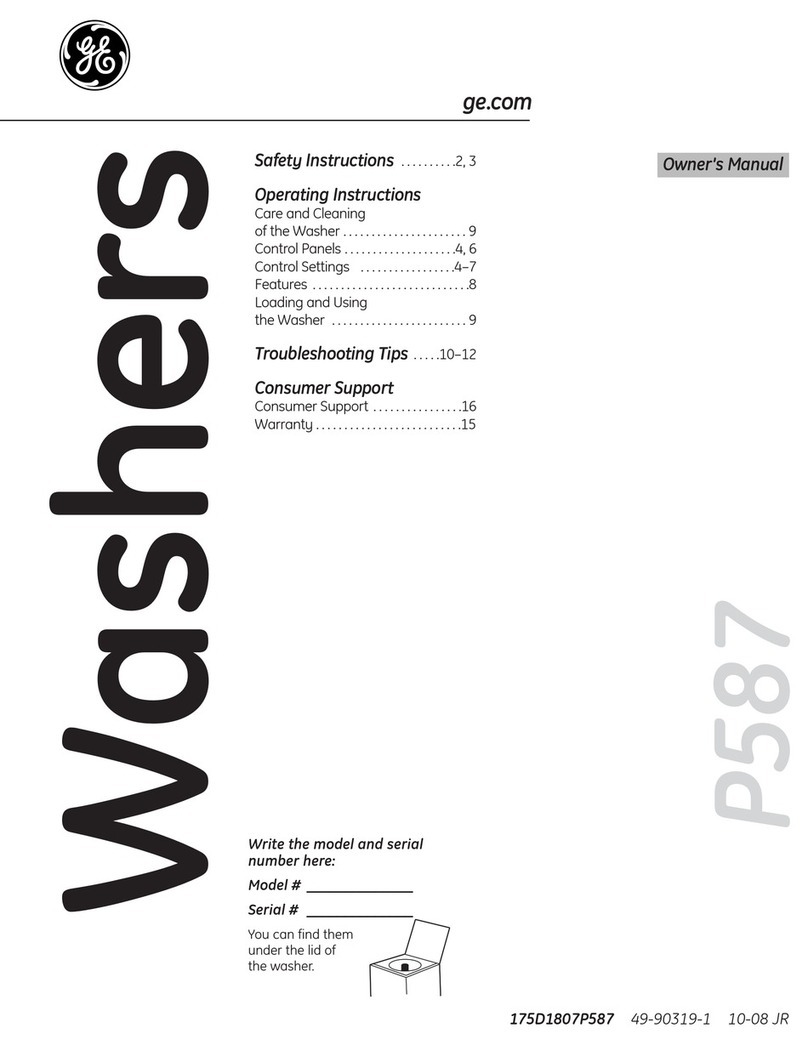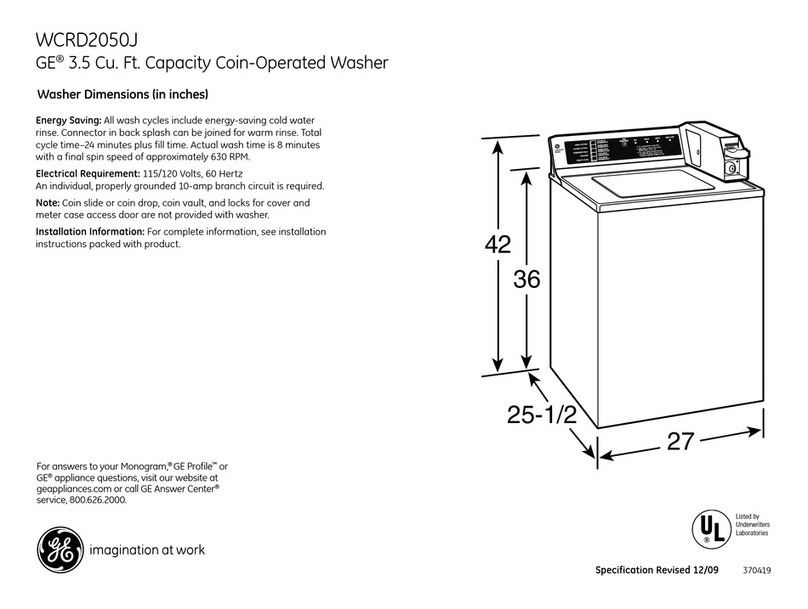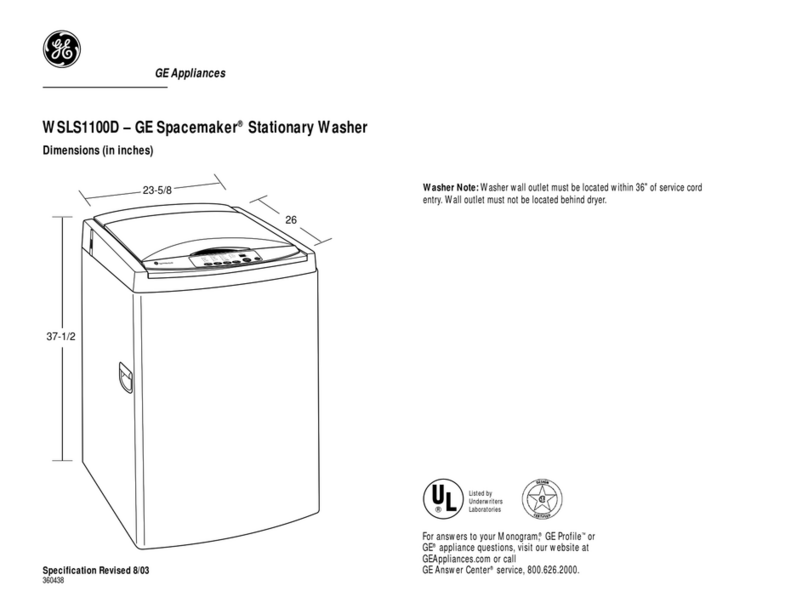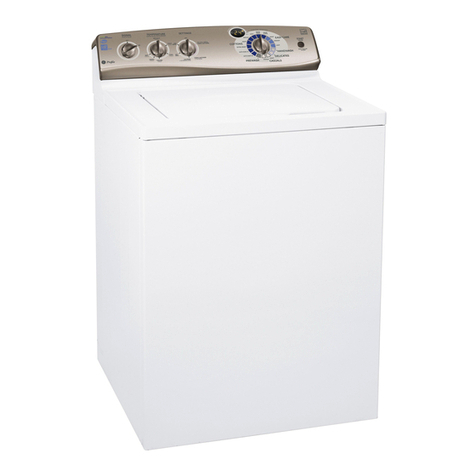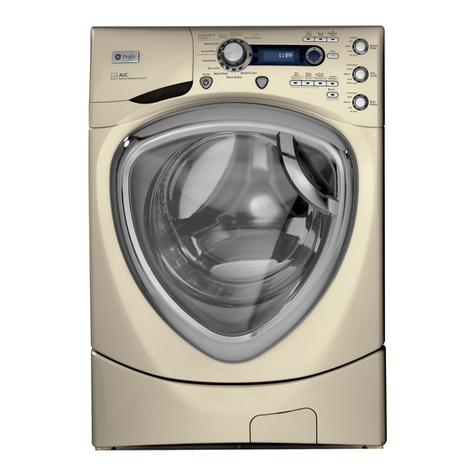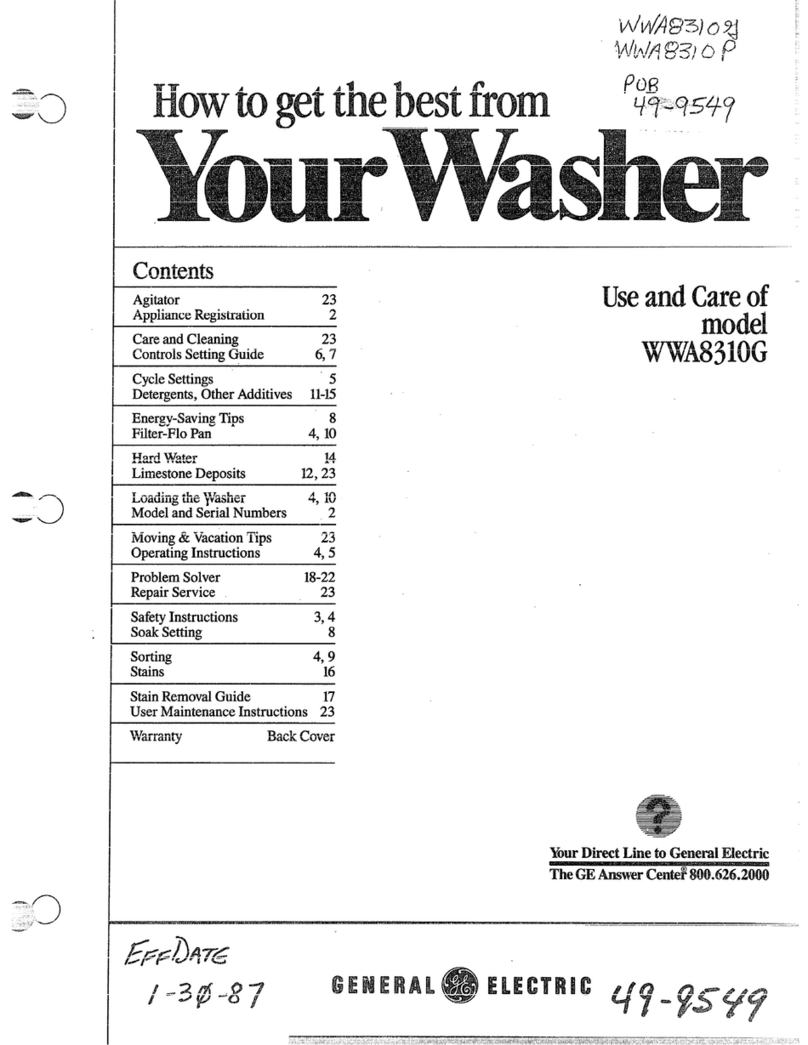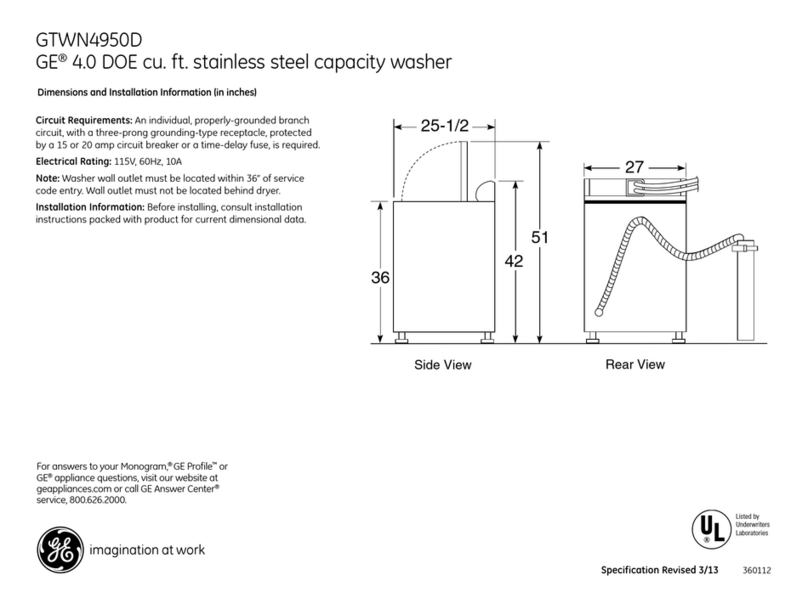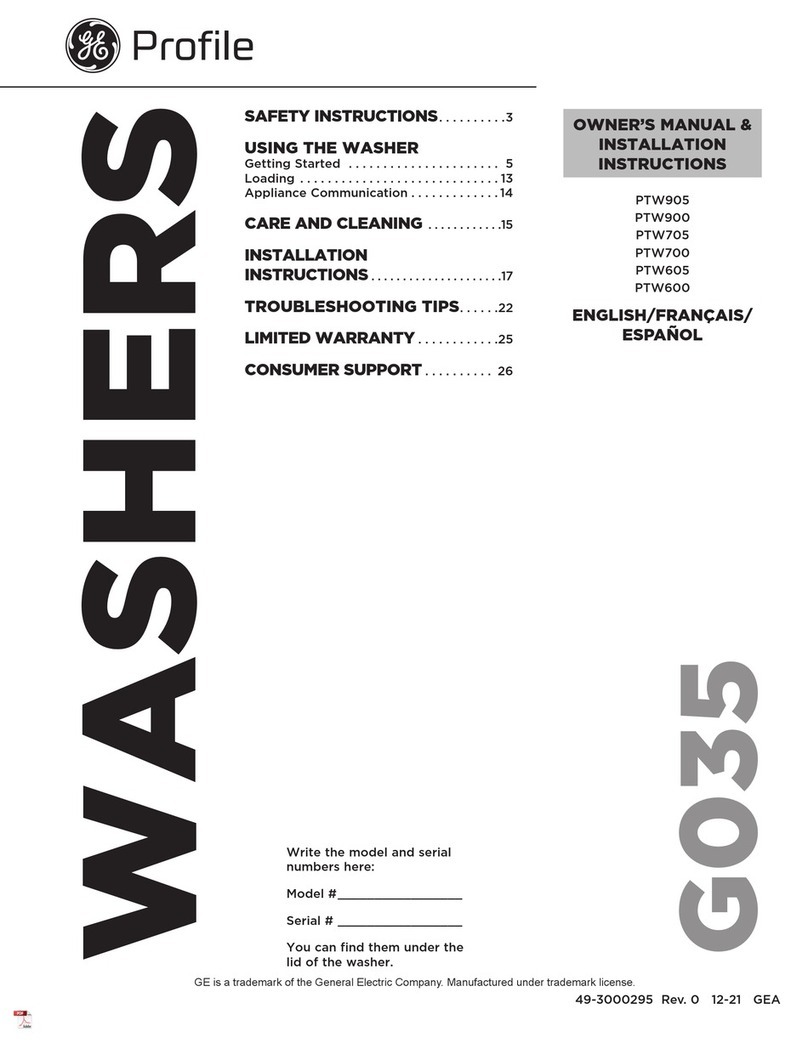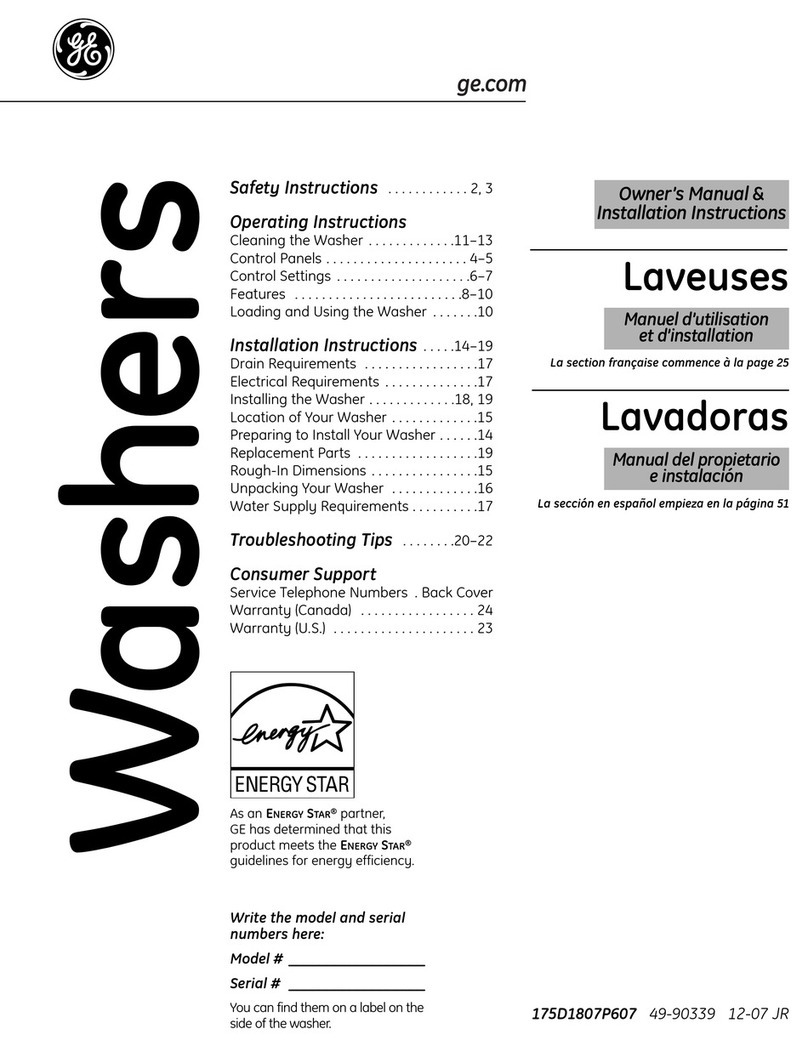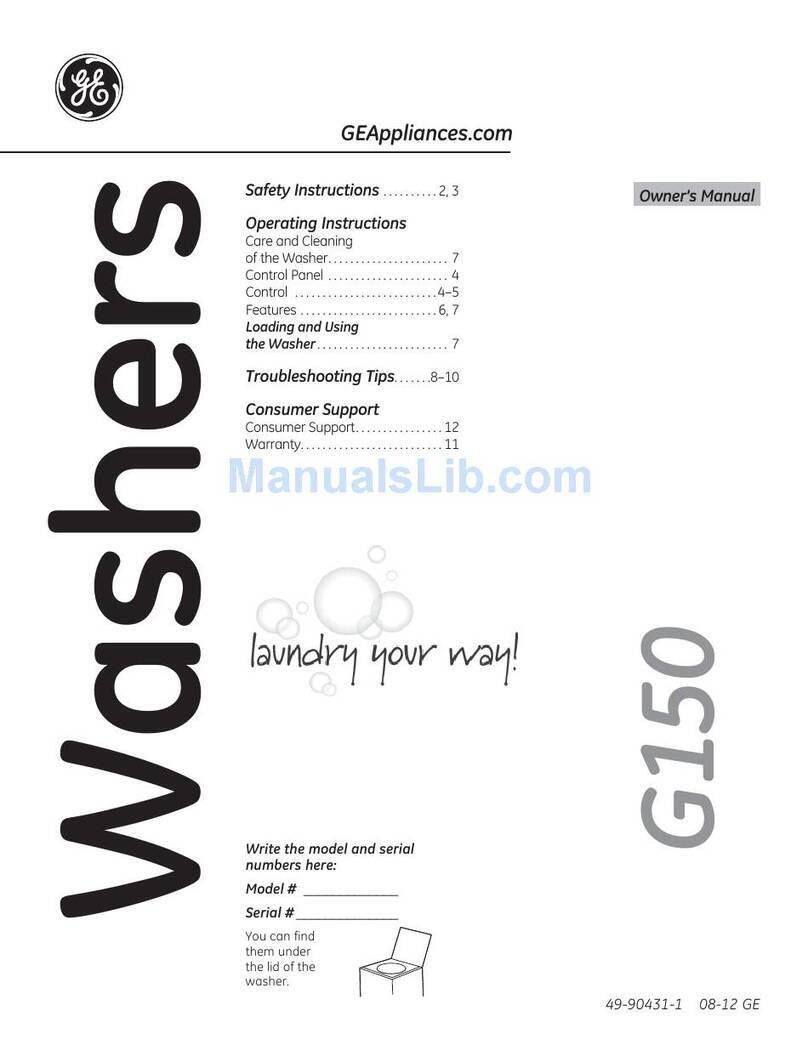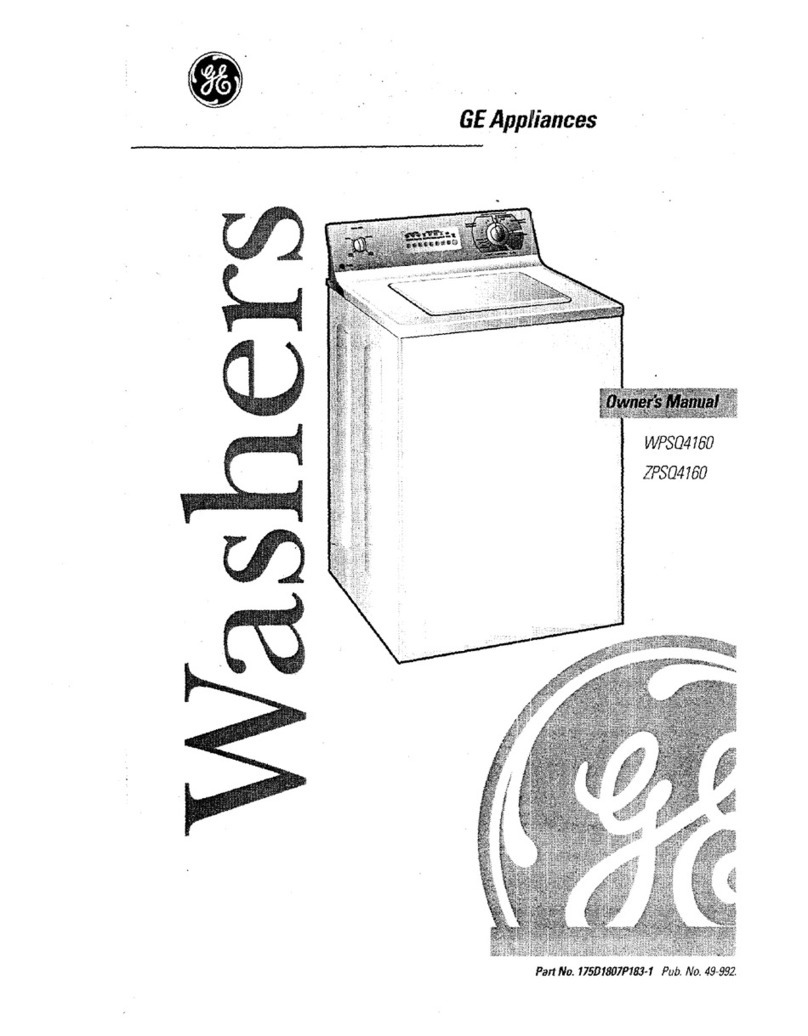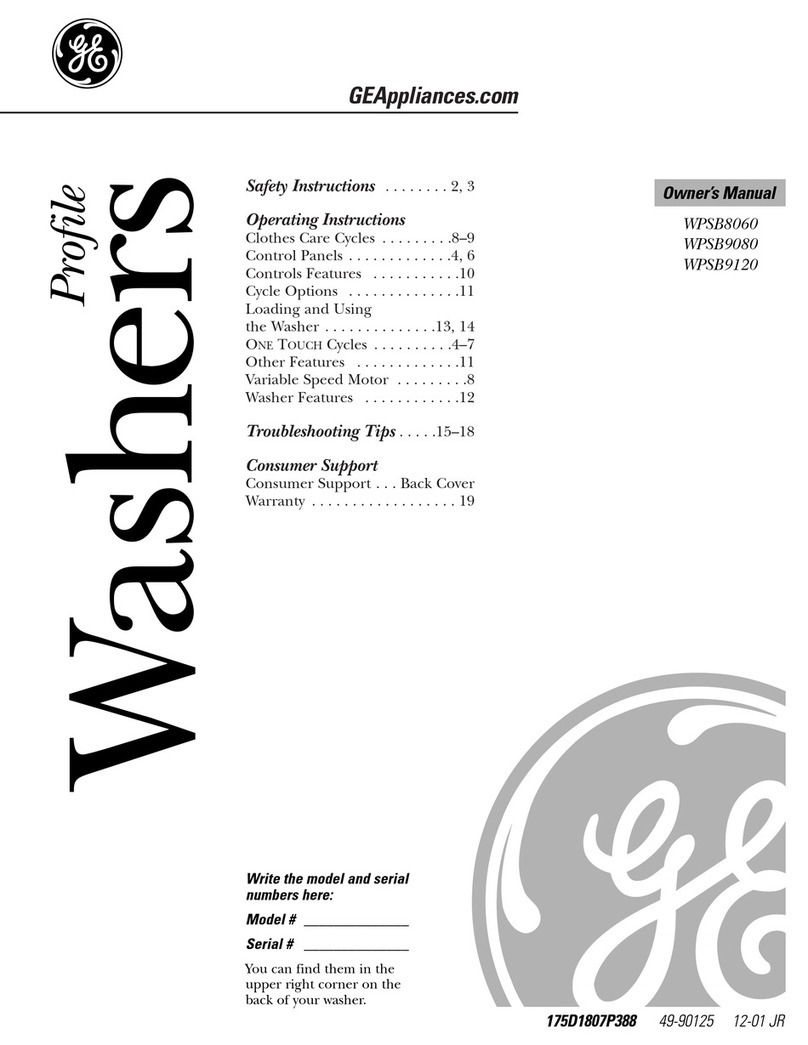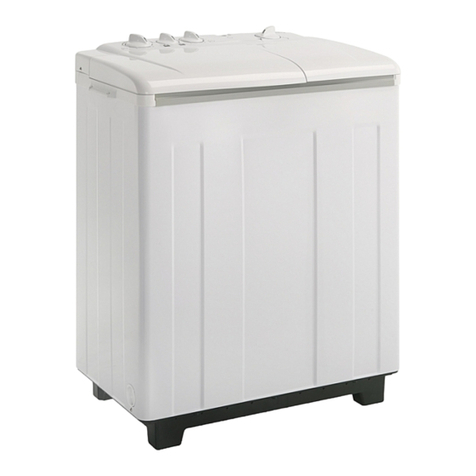
49-90587-2 7
USING THE WASHER
Getting started
D
Items to Wash Cycle Wash Temp Soil
Level
Default
Option
Cycle Details
Cycle for normal, regular,
or typical use for washing
up to a full load of normally
soiled cotton clothing.
Normal Warm Normal None
Cycle for normal, regular, or typical
use for washing up to a full load of
normally soiled cotton clothing.
Choose
the Heavy soil level selection and Warm
or Hot water temperature selection as
appropriate
for your clothes load for a
higher
degree of cleaning.
Casual clothes, lightly
soiled office wear.
Casuals Warm Normal None Wash cycle tailored to care for casual
clothes and office wear items.
Lingerie and special care
fabrics with light soil.
Water-resistant, bedding
and bulky items, such as
large coats, mattress pads,
and bath mats.
Delicates Cool Normal None Wash cycle tailored to delicate fabrics.
It is recommended to place small or
ultra delicate items in mesh bags before
washing.
Small loads of lightly soiled
items that are needed in
a hurry. Examples include
one casual wear outfit or 3
soccer uniforms.
Speed
Wash
Warm Light None Expedited wash period, and time saving
rinse to clean small lightly soiled loads in
the fastest time possible.
Jeans with medium to light
soil.
Jeans Warm Normal None For heavily soiled work jeans, use the
Heavy Duty cycle.
Sturdy fabrics with heavy to
medium soil.
Heavy
Duty
Warm Heavy Pre- Soak Incorporates pre-
soak and extended
wash periods to effectively clean heavily
to medium soiled sturdy fabrics.
Towels
Sheets
Towels Warm Normal Extra Rinse Cycle designed for washing towels or
sheets. It is recommended that towels
and sheets be washed separately for
best care and washing performance. For
waterproof bed covers use Delicates
cycle.
Whites and household
linens
Whites Hot Normal Extra Rinse Cycle tailored to clean and brighten your
whites.
Cleaning the basket of
residue and odor. No clothes
to be washed using this
cycle.
Whites Hot Normal Deep Fill
(You need to
select)
Recommended use of at least once
per month. Never load laundry when
using this cycle; laundry may become
damaged or contaminated. Cycle
incorporates a hot deep wash.
Cycle
Press the Cycle button to select the desired cycle.
The chart below will help you match the items to be washed with the best wash cycle settings. For optimal
performance, select the cycle that most closely matches the items being washed.
Failure to follow these instructions may result in injury or property damage.
For Waterproof, Water-Resistant, or Bulky Items:
•
Only use the Delicates cycle.
•
Using other cycles can cause excessive vibration and may result in injury or damage to the washer, walls, or
floor.
•
Do not mix waterproof and non-waterproof items
.
•
Read the Owner’s Manual for wash cycle details.
CAUTION
